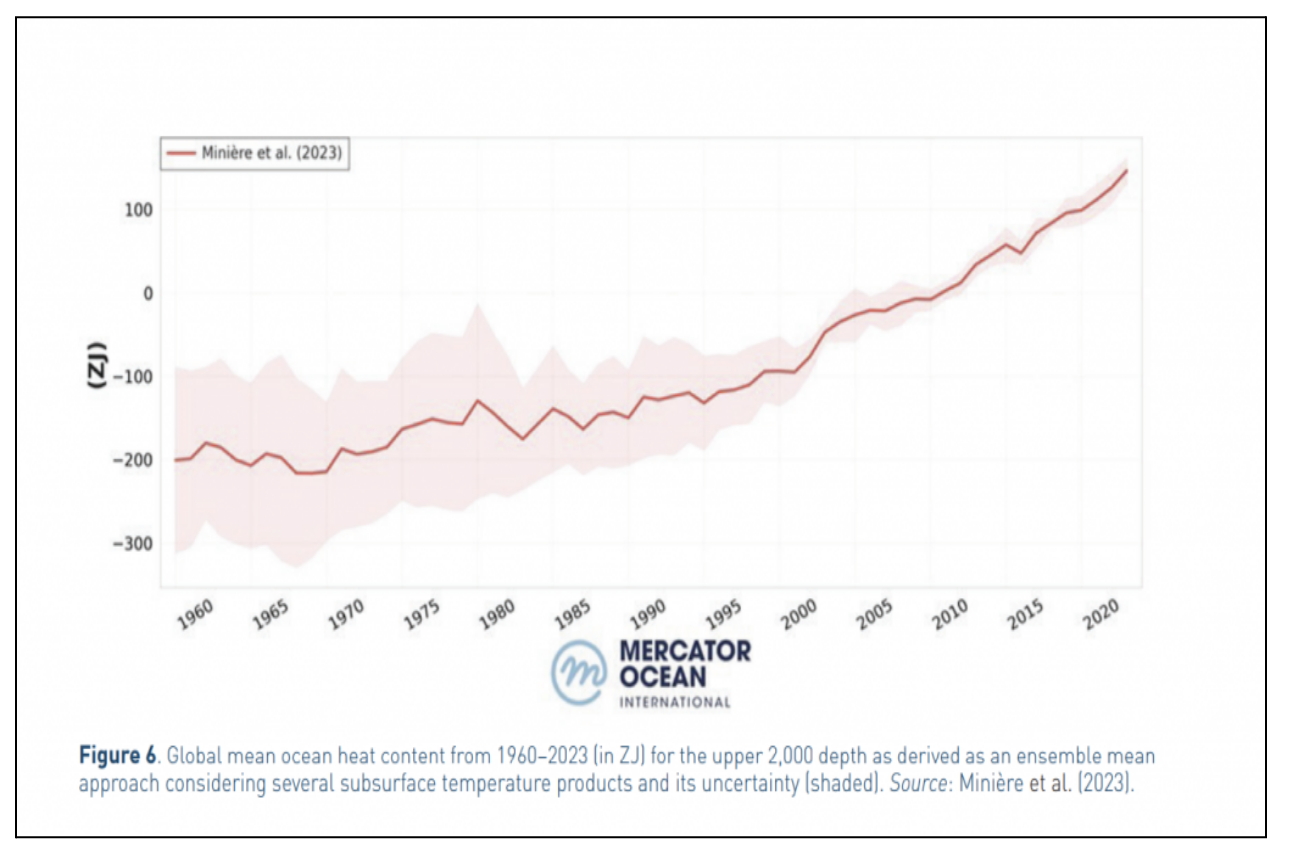News Excerpt:
UNESCO’s State of Ocean Report calls for the need to provide regular data on how ocean warming is evolving and its impacts; this is needed to support the decade-long challenge for healthy and resilient oceans.
|
About State of Ocean Report:
|

Key takeaways from the Report:
- The message remains that observations and research are falling short and hence there is a lack of adequate and aggregated data.
- The upper 2,000 meters of oceans warmed at a rate of 0.32 ± 0.03 watts per square meter from 1960 through 2023, and this rate has doubled to 0.66 ± 0.10 watts per square meter in the past two decades.
- The report calls for the need to provide regular data on how ocean warming is evolving and its impacts.
- This is needed to support the decade challenge for healthy and resilient oceans.
- Increased greenhouse gas emissions from human activities lead to a higher uptake of the Earth's energy imbalance (EEI) by oceans.
-
- EEI represents the balance between incoming solar energy and outgoing energy from the Earth.
- Approximately 90% of the Earth's energy imbalance (EEI) is absorbed by oceans, leading to a cumulative rise in ocean heat content (OHC) in the upper 2,000 meters.
-
- OHC represents the total heat stored by oceans.
- The increased OHC restricts ocean layer mixing, reducing oxygen levels in near-surface high-latitude waters reaching deeper ocean layers, termed 'deoxygenation.'
Ocean Acidification and Mitigation Efforts:
- Another crisis highlighted in the report is the mean global increase in ocean acidification in all ocean basins and seas.
- Coastal waters can become acidic due to natural processes like freshwater influx, biological activity, temperature change, and climate patterns such as El Nino/Southern Oscillation (ENSO).
- Human activities, such as nutrient input from agriculture and industry, also impact the chemistry of coastal areas.
- Longer-term data sets are needed for coastal areas compared to the open ocean to determine the emergence of ocean acidification trends.
- Sea levels rose in 2023, with the global mean sea level increasing by 3.4 +/-0.3 mm/yr from 1993 to 2023.
- Further, there's a need to enhance both space-based and in situ observing systems to monitor sea level rise at global, regional, and coastal levels.
- It discusses recent advancements in marine carbon dioxide removal (mCDR) technologies, which involve capturing carbon dioxide from the air and storing it durably.
- Techniques include altering seawater's chemical composition to enhance carbon absorption or adding nutrients like iron to stimulate plankton growth, aiding in carbon storage.
- Since 2020, there's been a surge in mCDR interest, posing technical, environmental, political, legal, and regulatory challenges.
- This rise is attributed to scientific papers, start-ups developing mCDR methods, and significant funding from the United States and the European Union in 2023.


